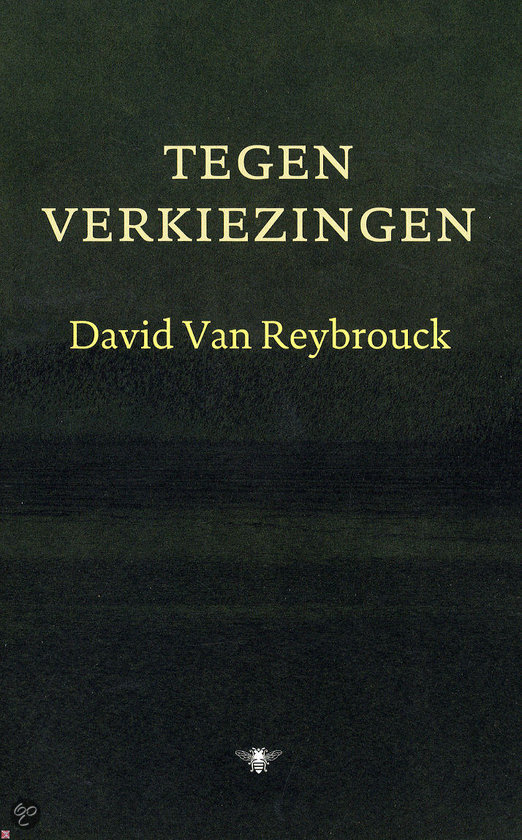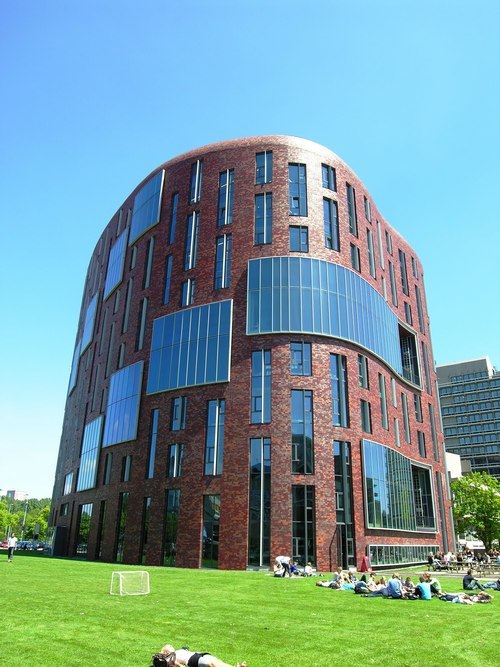Yup, just one for the record again, about this blog this time:

Tag: people
We Need New Sixties
Just an off the cuff remark. We need new Sixties. The world of totalitarian bureaucratic control, in business and in governance (if you’d reply that there’s governance in business as well, take a hike. With due apologies, that was putting it diplomatic already), has come to an end. It has failed to deliver the global commons cooperation required to deal with planetary issues. More of the same will not do.
Oh, if only we had the Sixties all over again, where old (political informal) structures were attacked by a very select very few opponents… That in the end quickly converted to being maybe even worse that their predecessors. Um.
That is why all of you should be wanting to have a translation of Tegen Verkiezingen
[Get it. That’s an order or in the alternative a recommendation]
Yes, yes, working on a Book by Quote post indeed [to be posted per 25/8]. But would be in Dutch.
And, after an initial euphoria of recognition of many lingering ideas, I found some solutions still wanting. So, when I do the follow-up reading of referenced and secondary literature, do you help develop the many loose ends ..? E.g., relations with the decline of information/communication costs and -troubles so we can do so much more (not physically, not-physically) close interaction as to make all the nation sit around the old oak tree ..? In a systemic, structural, and operational way of development, e.g., through Internet voting with all the safeguards..?
Crowdjustice
Wellicht zullen gevestigde belangen (weer ten onrechte … DNB-kneuterpietluttigheid-waarschijnlijk-uit-doodsangst-uit-onbegrip (hoewel dat d… terecht, en gewenst?) vs California State…) gaan waarschuwen voordat de vergelijking met de huidige feitelijke situatie voldoende fundamenteel en objectief is gemaakt, maar dit is natuurlijk een interessante nieuwigheid; crowdsourcing justice. En voor degenen die jury-rechtspraak iets engs vinden wat wat de boer niet lust, leze nee bestudere dit werk eens.
Plots komt zo veel samen… Vreugde alomom zo veel culturele vooruitgang.
[Edited to add: Zie de post van 25 augustus 2014…]
Inter faces

[Educational institute x 3, campus Free University, Amsterdam]
When sleeping over problems, one often comes up with solutions that both are real and so all-encompassing that they’ll need much elaboration before being applicable in a nimble way.
This one was/is on information security, again. Recall the ‘discussions’ I posted some days ago about (industrial) process control versus administrative control? Well, I’ve some more elements for a grand new scheme now.
It struck me that the operators at the (chemical) plant control room, are the ones with the dashboards. Not necessarily their managers. Nor their manager managers, etc. What if instead of some machine equipment, we plug in hoomans into the whole ..? And let them interact like the übercomplex ‘machines’ that they are, doing their (administrative / service) thing that they (want to?) do. All the way to the point where we have no equipment, just humans (with tools, by the way, but those would be under ‘complete’ control of the ones using them so are just extensions of them). One ‘manager’ could then control quite a lot; have a huge span of control…
If, big if, if only the manager would understand the overall ‘process’ well enough, that is, to be able to work with the dashboard then provided. Just Continuous Monitoring as a job, not much more (one would have 2nd- and/or 3rd ‘lines of control’ (ugh for the expression) to fix deviations, do planned maintenance, etc.). Probably not. But one can still dream; organizations would be flat without chaos breaking out.
And if you’d say it would be impossible altogether, have a look at your SOC/NOC room where techies monitor IT network traffic and systems’ health. They even have some room to correct..! And they are aware, monitor, the appropriateness of what flows over the lines, having professional pride in catching un(machine)detected patterns of irregularity possibly being break-in/break-out attempts. And they leave the content for what it is, that’s for the experts, the users themselves, to understand and monitor if only they would.
Why wouldn’t other ‘managers’ copy the idea to their own desk? No, they don’t, yet. They get Reports that they hardly read, because someone else had thought for them in determining what should be in there. And reports aren’t continuous. Walking around is, but would (rightly) be viewed as micromanagement and a bit too much given the non-continuous nature of what modern knowledge workers do. So, we’ll have to define some gauges that are monitored semi-continuously.
Now, a picture again to refresh:

[Westpunt, Curaçao]
But with the measurements not influencing the primary production ..! To let knowledge workers do their thing, in mutual cooperation without interference by some busybody thinking (s)he knows better for no reason whatsoever.
Through which we note that the use of dashboards should not, must not, start with ‘Board’s or similar utterly superfluous governance levels. Governance is for governments. As it is ‘implemented’ in larger organizations, it doesn’t look like kindergarten kids playing Important for nothing. The use of dashboards should start from the bottom, and should include quite rigorous (but not merely by the numbers) pruning of both middle-level ‘managers’ (keep the good ones, i.e., not the ones that are only expert in hanging on! otherwise you spell death), and all sorts of groupie secondary and third-line staff.
Which will only work if you haven’t yet driven out all the knowledge workers by dumbing down their work into ‘processes’ and ‘procedures’ that are bereft of any productive (sic) rationale. And if you haven’t driven out all the actual managers and are left with the deadwood that is expert only in toeing the line or rather, sitting dead still in their place.
Now have a look back also on how you do information security. Wouldn’t the little bit of tuning you may need to do, be focused best on the very shop floor level that go into the ‘industrial’ process as inputs? You would only have to informationsecure anything that would not be controlled ‘automatically’, innate in the humans that handle the information (and data; we’ll discuss later). Leave infosec mostly with them, with support concentrated at an infosec department maybe, and have managers monitor it only to the extent necessary.
And, by extension, the same would go for risk management altogether. Wouldn’t this deliver a much more lean and mean org structure than the top-down approaches that lead to such massive counterproductive overhead as we see today? With the very first-line staff that would need all the freedom feasible to be productive (the managers and rest of the overhead, aren’t, very very maybe only indirectly but certainly not worth their current income levels!) then not having to prove their innocence… See Menno Lanting’s blog for details…
Org structures have become more diamond- than pyramid-shaped; which is plain wrong for effectiveness and efficiency…
So let’s cut the cr.p and manage the interfaces, vertically, and horizontally, noting the faces part; human. An art maybe, but better than the current nonsense…
The P (part 1, too)
Now then, for the grand Part 1 of the People of Information Security. À la the triangle I posted on earlier (see somewhere below) where the People aspect floats around the triangle like a dense cloud; obscuring your clear view and posing a foggy unclarity threat.
To jot down, there are many aspects of People that we have to deal with, but let’s start with some random unstructured angles:
 [Generalife, Granada]
[Generalife, Granada]
People are a Threat. Externally, they are the actors, not random Acts of nature. No, they, they! the people, the masses (even in Ortega y Gasset style), they exist only to attack us!
How nice if you believe such, how nice to all those that have a sense of community and either don’t care to attack you even if it could be to their (risk-weighted) profit, or even help you, tacitly or visibly, explicitly. How hard do you work to alienate all those, too? Notwithstanding that there are indeed some out there that want to attack you: Have you ever stepped into their shoes to figure out why ..? If (very big if) you really stepped into their mindset, wouldn’t you do the same because by their reasoning, you ‘deserved’ it?
People are Vulnerabilities, on the inside. They are frail, failing their duty-above-all to follow your procedures, excuse me the word F.ck the contributions to the organizational success; your procedures are sacred of course?
People are Means in information security. That’s actually what they are in the People, Process, Technology trio. Vulnerability, and Threat by the way, if they deviate from how you wanted to deploy the resource, but they can also be very powerful ‘allies’ as resource to deploy in information security, information safety [nice idea, to defuse the old phrase], information asset protection. People are the thing (sic) that might follow Process using Technology to achieve protection. People are the ones to task doing to safeguard your information assets. They may not be perfect, but they will for a long time to come be the actual actors and re-actors.
People are psychological constructs acting in sociological environments. I cannot write this often enough: Read and re-read Bruce Schneier’s Liars and Outliers, to understand how these People may operate in your artificial society called organization (oh the wishful thinking in that word…).
People then, will have to be included in security design in the prominent role they have not as an afterthough. They will have to take center stage indeed, as alpha and omega of information security organization.
We’ll have to find ways to really start with People and see how their work may be structured, and how their work may be supported (not the other way around!!) by Process and Technology. Process as a little handy tool, not as the raison d’être – an uphill struggle it will indeed be, but also sign of the times already! Totalitarian bureaucrats beware; the Age of Compliance is waning. See a future blog. Technology as a little handy tool (in big plural), not as the first to arrive and to bolt a bit of Process and very maybe even People onto here and there.
But we haven’t explored such a design direction at all, yet! We have no clue, no metholodogy, no vocabulary, to describe such a ‘design’ …
That’s where you come in; through your comments I propose to crowdsource such a methodology. Be part of it!

